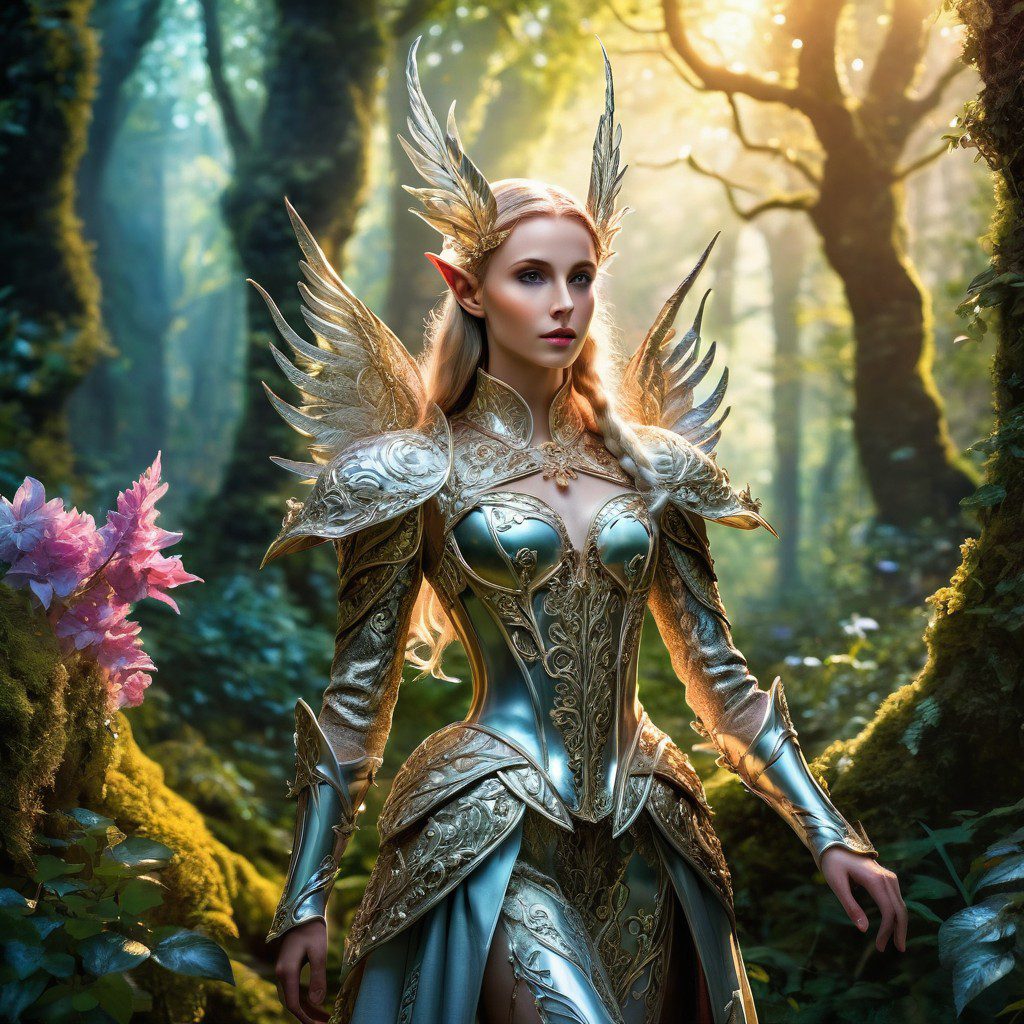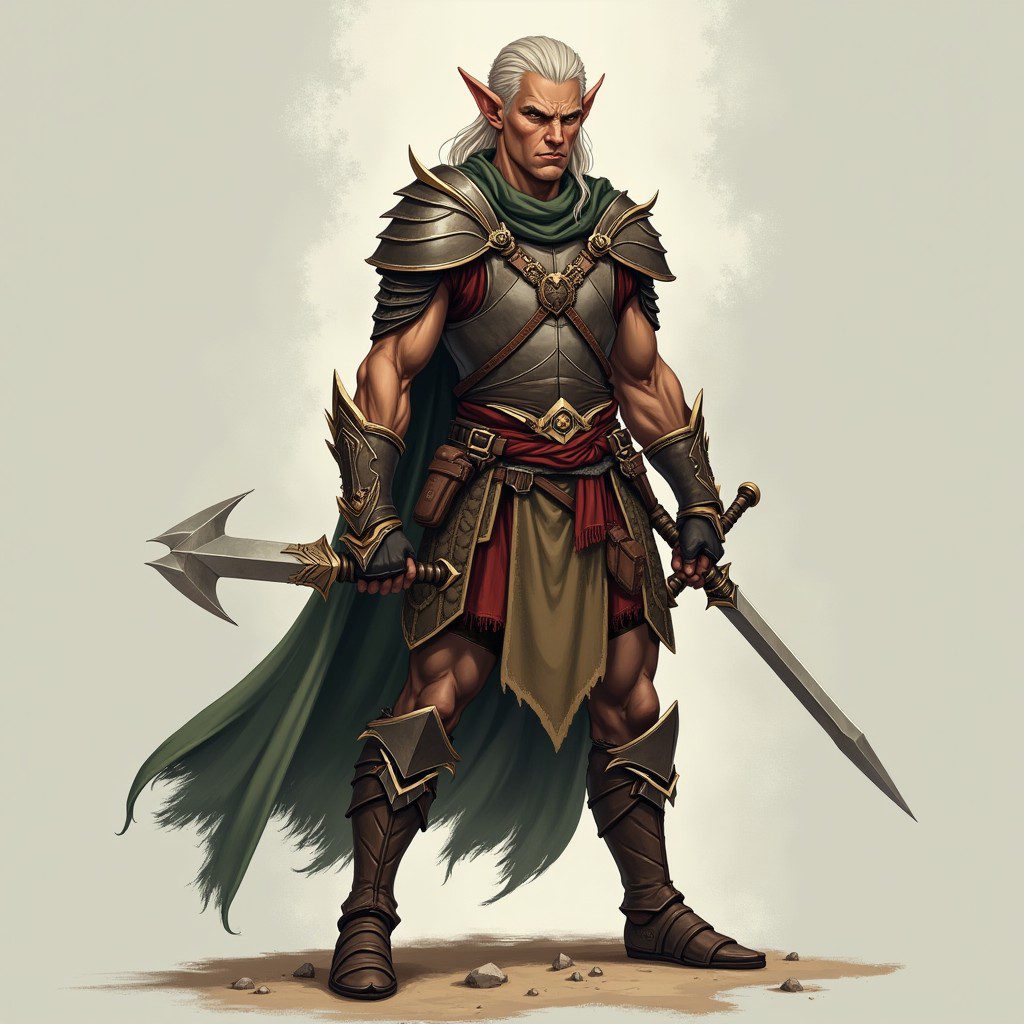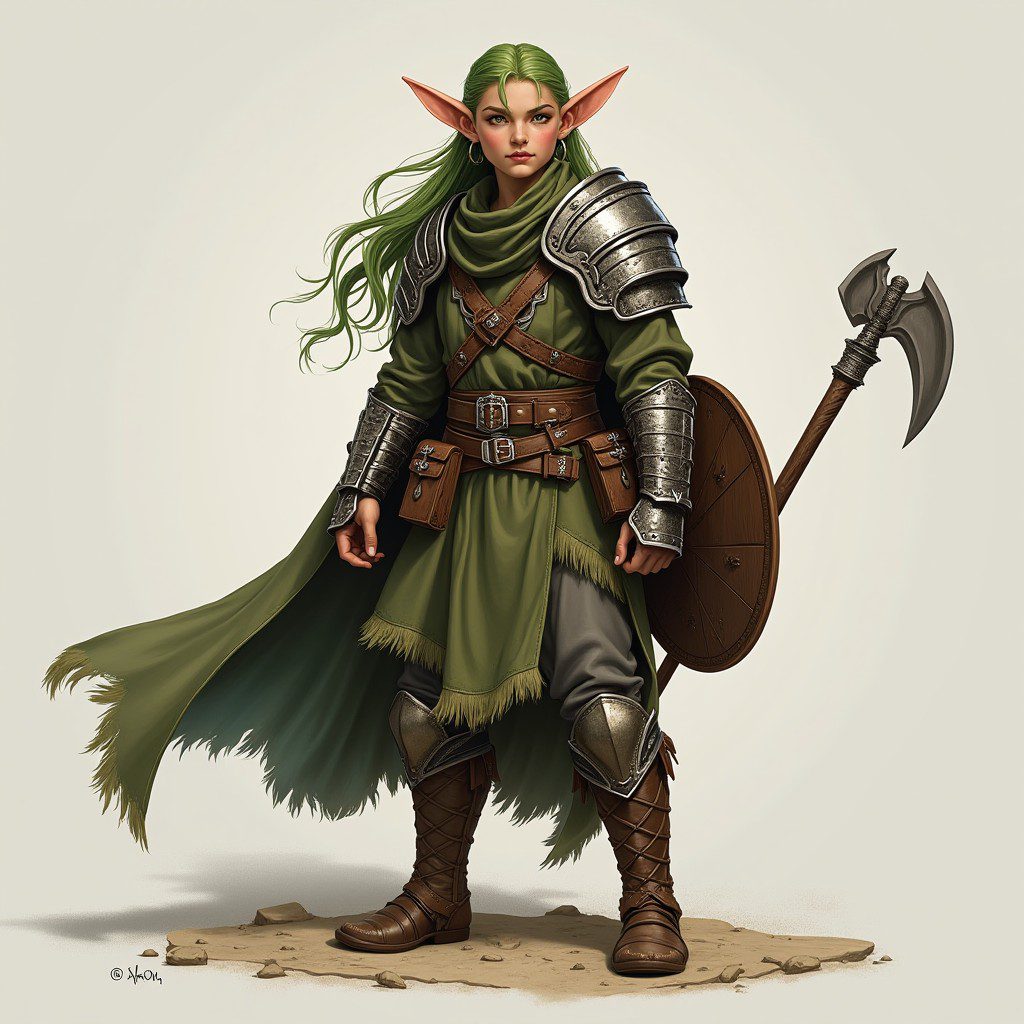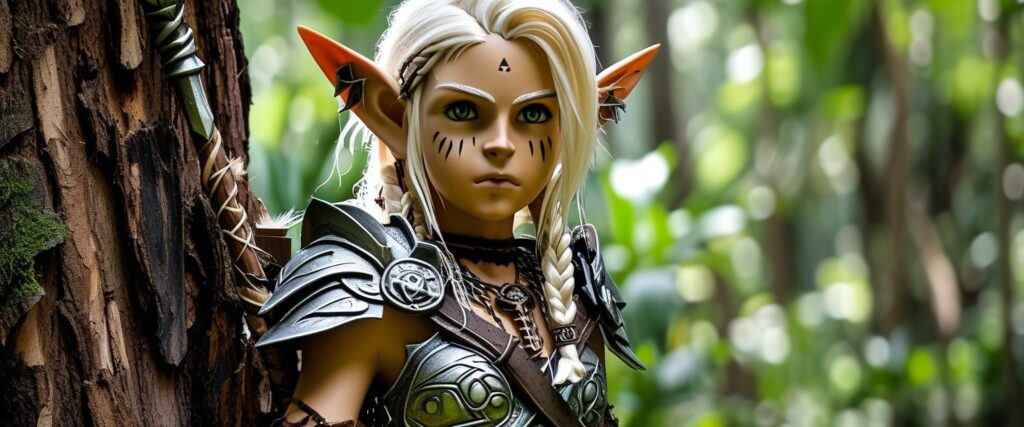Elves: The Enigmatic and Magical Beings of Mythology and Folklore

Elves are some of the most enduring and iconic figures in mythology and fantasy, representing mystery, beauty, and magical power. Originating from the folklore of Germanic, Scandinavian, and Celtic traditions, elves have evolved significantly over centuries—from mischievous and ethereal spirits in ancient myths to noble and heroic beings in modern fantasy literature. While their roles and characteristics vary depending on the source, elves are typically associated with nature, magic, and a deep connection to the spiritual world.
Let’s explore the origins of elves, their depiction in different mythologies, and their prominent role in modern media, including literature, films, and video games.
Origins and Cultural History of Elves
The word “elf” derives from the Old English ælf or ylfe, which itself comes from the Proto-Germanic albiz. In ancient times, elves were considered supernatural beings, closely tied to nature and often linked to both positive and negative interactions with humans. The early concept of elves encompassed a wide variety of beings, ranging from helpful spirits to dangerous tricksters. They were not originally the humanoid, graceful beings familiar in modern fantasy but were instead ethereal, often invisible spirits who could influence the world around them.
In Norse and Germanic mythology, elves were considered part of a broader category of vættir, or nature spirits, which included a wide range of supernatural beings. Elves were seen as mysterious and powerful, often inhabiting forests, mountains, and other wild places. They were believed to be long-lived or immortal and possessed magical abilities that allowed them to influence both the natural world and human fate.
Elves were divided into different categories in early traditions:
- Light Elves (Ljósálfar): In Norse mythology, the Ljósálfar were beautiful, radiant beings who lived in Álfheimr (Elf-home) and were closely associated with light and air. They were benevolent and associated with fertility, the arts, and protection.
- Dark Elves (Dökkálfar): The Dökkálfar, on the other hand, were more secretive and sinister, often associated with the underground and shadows. In later interpretations, they were linked with the dwarves or dark forces, representing the more dangerous aspects of nature.
Elves also feature prominently in Celtic mythology, where they are often synonymous with the sidhe (pronounced “shee”), or fairies, who lived in the Otherworld. These beings were powerful, capricious, and could either help or harm humans depending on how they were treated.
Elves in Norse and Germanic Mythology


In Norse mythology, elves were considered divine beings who were connected to the gods and the natural world. They are particularly associated with the god Freyr, a Vanir deity linked to fertility and prosperity, who was said to rule over Álfheimr, the realm of the elves.
1. Álfheimr
Álfheimr is one of the Nine Worlds in Norse cosmology, the home of the Light Elves. It is often depicted as a place of great beauty and light, where the elves lived in harmony with nature. The Light Elves were described as ethereal beings who brought blessings to those who honored them. They were associated with fertility, health, and prosperity, and sacrifices or offerings were made to them for good harvests or protection.
2. Dark Elves
The Dökkálfar are more elusive in Norse mythology and are sometimes equated with dwarves, who also live underground and are skilled in crafting and magic. They are connected with darker aspects of nature and the underworld, representing the mysterious and often dangerous forces beneath the surface of the earth.
Elves in Celtic Mythology
In Celtic mythology, elves are often referred to as the sidhe, a race of supernatural beings who inhabit the Otherworld. The sidhe were known to be immortal or long-lived and had a complicated relationship with humans, sometimes bestowing blessings and protection, and at other times causing mischief or harm.
1. The Tuatha Dé Danann
The Tuatha Dé Danann, a group of god-like figures in Irish mythology, are often associated with elves or fairies. After being defeated in battle by the Milesians, the Tuatha Dé Danann retreated to the underground, where they became the sidhe—the ancestors of modern depictions of elves and fairies. These beings were known for their incredible beauty, magical abilities, and their timeless connection to the earth and the elements.
2. Fairy Mounds and the Otherworld
Elves in Celtic mythology were believed to live in fairy mounds or underground palaces that could only be accessed through special portals or during certain times of the year, such as Samhain. These places were considered to be entrances to the Otherworld, a realm of magic and mystery. The relationship between the elves and humans was often precarious, with humans having to show respect and avoid offending the sidhe to prevent misfortune.
Elves in Modern Fantasy Literature

The modern image of elves—tall, graceful, and magical beings with pointed ears—owes much to the work of J.R.R. Tolkien, whose The Lord of the Rings trilogy and The Silmarillion redefined the way elves are viewed in fantasy. Tolkien’s elves are noble, wise, and long-lived, possessing great skill in arts, crafts, and battle. They are closely connected to the natural world, and many live in beautiful, forested realms like Rivendell and Lothlórien.
Tolkien’s depiction of elves was inspired by Norse and Celtic traditions but also reimagined them in a new light. His elves are not the mischievous tricksters of folklore but rather enlightened beings with deep emotional and spiritual depth. The following are key characteristics of elves in modern fantasy, heavily influenced by Tolkien:
1. Nobility and Grace
Elves are often depicted as noble, aristocratic beings, embodying grace, wisdom, and beauty. They are seen as the guardians of ancient knowledge and culture, and they often hold a moral authority over other races.
2. Immortality and Tragedy
Many modern depictions of elves include their immortality, or at least their longevity. This immortality often leads to themes of tragedy, as elves witness the rise and fall of mortal civilizations and suffer from a kind of eternal melancholy, knowing that their time in the world is fading.
3. Connection to Nature
Elves in modern fantasy are deeply connected to nature, often depicted as living in harmony with forests, animals, and the elements. They are portrayed as protectors of the natural world, standing against forces that would harm or exploit it.
Elves in Modern Media
Elves have become central figures in many forms of modern media, particularly in literature, film, and video games, where their depictions vary from Tolkien-inspired noble warriors to more mischievous or dark versions.
1. Literature
- J.R.R. Tolkien’s The Lord of the Rings: Perhaps the most famous depiction of elves, Tolkien’s works feature elves as one of the most powerful and ancient races in Middle-earth, with characters like Legolas, Galadriel, and Elrond embodying their nobility and strength.
- The Inheritance Cycle by Christopher Paolini: In Paolini’s Eragon series, elves are portrayed as ethereal, highly intelligent beings with a deep connection to magic and nature, similar to Tolkien’s elves.
2. Films and Television
- The Lord of the Rings and The Hobbit film trilogies: Peter Jackson’s adaptations of Tolkien’s works have solidified the image of elves in modern popular culture. Characters like Legolas (played by Orlando Bloom) are portrayed as swift, graceful warriors with incredible archery and combat skills.
- The Witcher series: In both the books by Andrzej Sapkowski and the Netflix adaptation, elves are depicted as a marginalized race, once powerful but now living in exile. They are portrayed with a blend of Tolkien’s nobility and the grim reality of political oppression.
3. Video Games
- World of Warcraft: Elves play a major role in this popular MMORPG, with Night Elves, Blood Elves, and other sub-races offering different interpretations of the classic fantasy elf archetype. The Night Elves are connected to nature and druidic magic, while the Blood Elves embody a more magical, arcane tradition.
- The Elder Scrolls series: Elves, or Mer as they are called in this franchise, come in various forms such as High Elves (Altmer), Dark Elves (Dunmer), and Wood Elves (Bosmer). Each type of elf has its own unique culture and characteristics, ranging from the mystical to the warlike.
Strengths and Weaknesses of Elves
Strengths:
- Immortality and Longevity: Elves are often depicted as long-lived or immortal, allowing them to accumulate vast knowledge and experience over the centuries.
- Magical Powers: Elves are usually portrayed as highly skilled in magic, particularly in controlling nature, healing, or manipulating the elements.
- Connection to Nature: Elves’ deep affinity with nature gives them a unique strength in preserving and protecting the natural world. They often have heightened senses, agility, and mastery over animals and plants.
- Superior Skills in Combat and Craftsmanship: Elves are frequently shown as exceptional warriors and craftsmen, particularly with archery, swordsmanship, and the forging of magical items.
Weaknesses:
1
. Emotional Detachment: Due to their long lives, elves are often portrayed as emotionally distant or melancholy, feeling disconnected from the struggles of mortals.
- Limited Reproduction: In many depictions, elves reproduce slowly, which makes them vulnerable to extinction, especially in times of war or conflict.
- Arrogance: Elves are sometimes shown as proud or even arrogant, believing themselves to be superior to other races. This arrogance can lead to their downfall, as it creates tension between them and other beings.
The Legacy of Elves: Timeless Symbols of Magic and Mystery
Elves have endured in mythology and fantasy for centuries because of their intrinsic connection to nature, magic, and the mysteries of the world. From their ancient origins in Norse and Celtic mythologies to their noble reinvention in modern fantasy, elves continue to captivate the human imagination. Their beauty, wisdom, and power—alongside their often tragic or melancholic nature—make them timeless symbols of the tension between immortality and the fleeting nature of the world.
Whether as heroes or tricksters, protectors or adversaries, elves will likely remain central figures in fantasy literature, film, and games for many generations to come.
